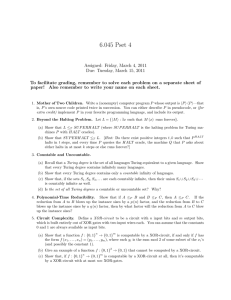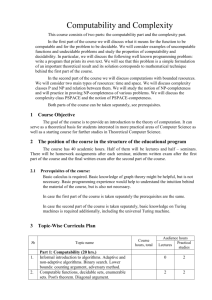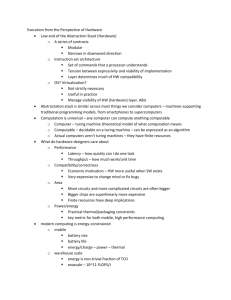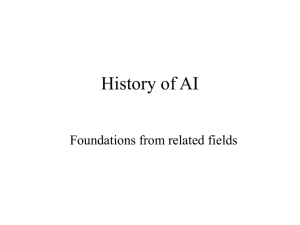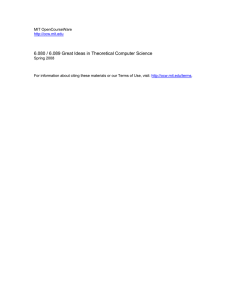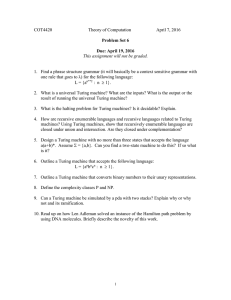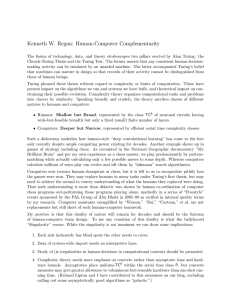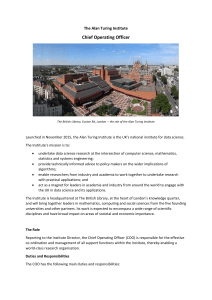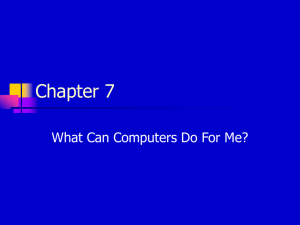Elliott Battle 12/07/12 The Turing Machine Tankurn Kotravivatana`s
advertisement
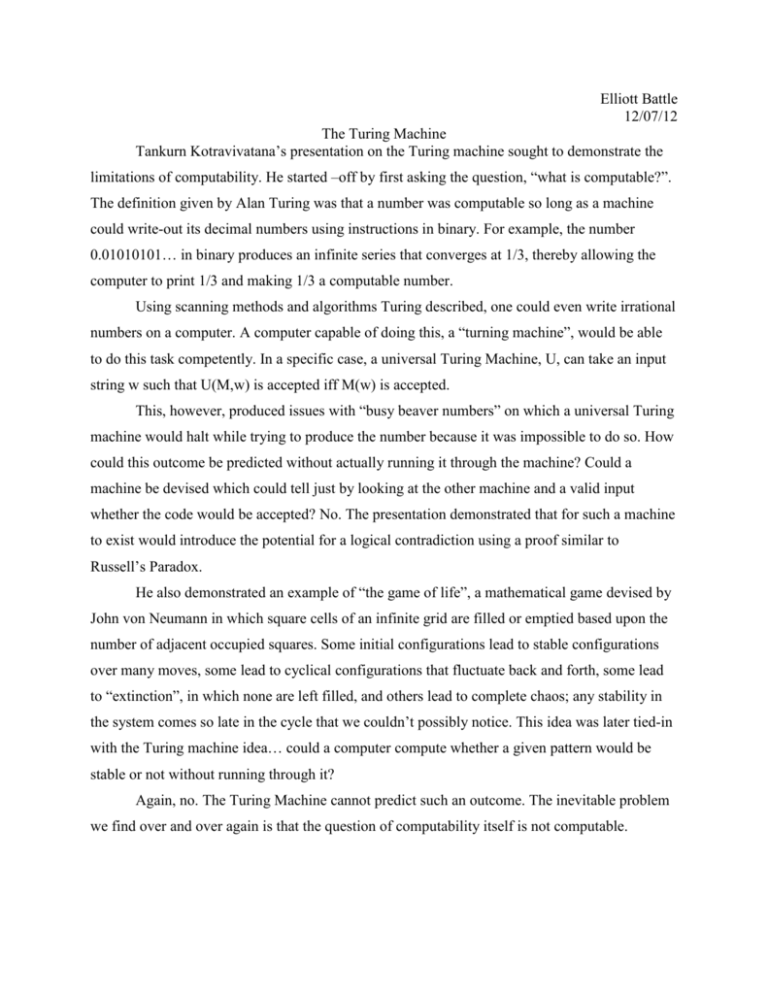
Elliott Battle 12/07/12 The Turing Machine Tankurn Kotravivatana’s presentation on the Turing machine sought to demonstrate the limitations of computability. He started –off by first asking the question, “what is computable?”. The definition given by Alan Turing was that a number was computable so long as a machine could write-out its decimal numbers using instructions in binary. For example, the number 0.01010101… in binary produces an infinite series that converges at 1/3, thereby allowing the computer to print 1/3 and making 1/3 a computable number. Using scanning methods and algorithms Turing described, one could even write irrational numbers on a computer. A computer capable of doing this, a “turning machine”, would be able to do this task competently. In a specific case, a universal Turing Machine, U, can take an input string w such that U(M,w) is accepted iff M(w) is accepted. This, however, produced issues with “busy beaver numbers” on which a universal Turing machine would halt while trying to produce the number because it was impossible to do so. How could this outcome be predicted without actually running it through the machine? Could a machine be devised which could tell just by looking at the other machine and a valid input whether the code would be accepted? No. The presentation demonstrated that for such a machine to exist would introduce the potential for a logical contradiction using a proof similar to Russell’s Paradox. He also demonstrated an example of “the game of life”, a mathematical game devised by John von Neumann in which square cells of an infinite grid are filled or emptied based upon the number of adjacent occupied squares. Some initial configurations lead to stable configurations over many moves, some lead to cyclical configurations that fluctuate back and forth, some lead to “extinction”, in which none are left filled, and others lead to complete chaos; any stability in the system comes so late in the cycle that we couldn’t possibly notice. This idea was later tied-in with the Turing machine idea… could a computer compute whether a given pattern would be stable or not without running through it? Again, no. The Turing Machine cannot predict such an outcome. The inevitable problem we find over and over again is that the question of computability itself is not computable.


